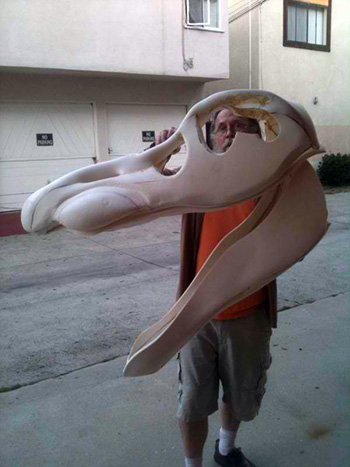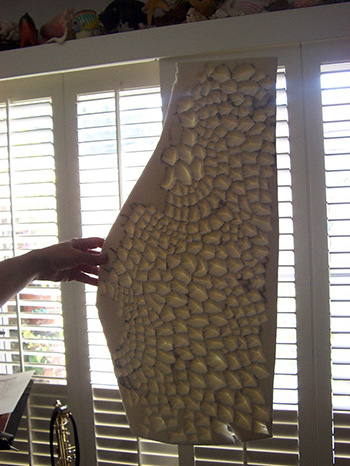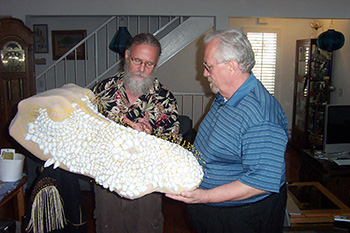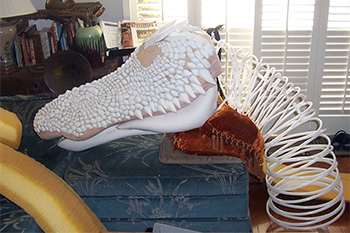 |
 2013: Already more than a decade into a new century, and with all the new information since the 1984 publication of the discovery of the Baryonyx, and contemplating novelizing the entire Long-Grin five-part series he's retitled the Long-Grin Saga, not only had our knowledge of dinosaurs -- especially the one at the roots of Long-Grin's family tree -- grown exponentially, but the techniques and materials used to fabricate a new dragon had also evolved significantly. Naturally, that being so, Travis contacted William "Billy" Bryan. |



